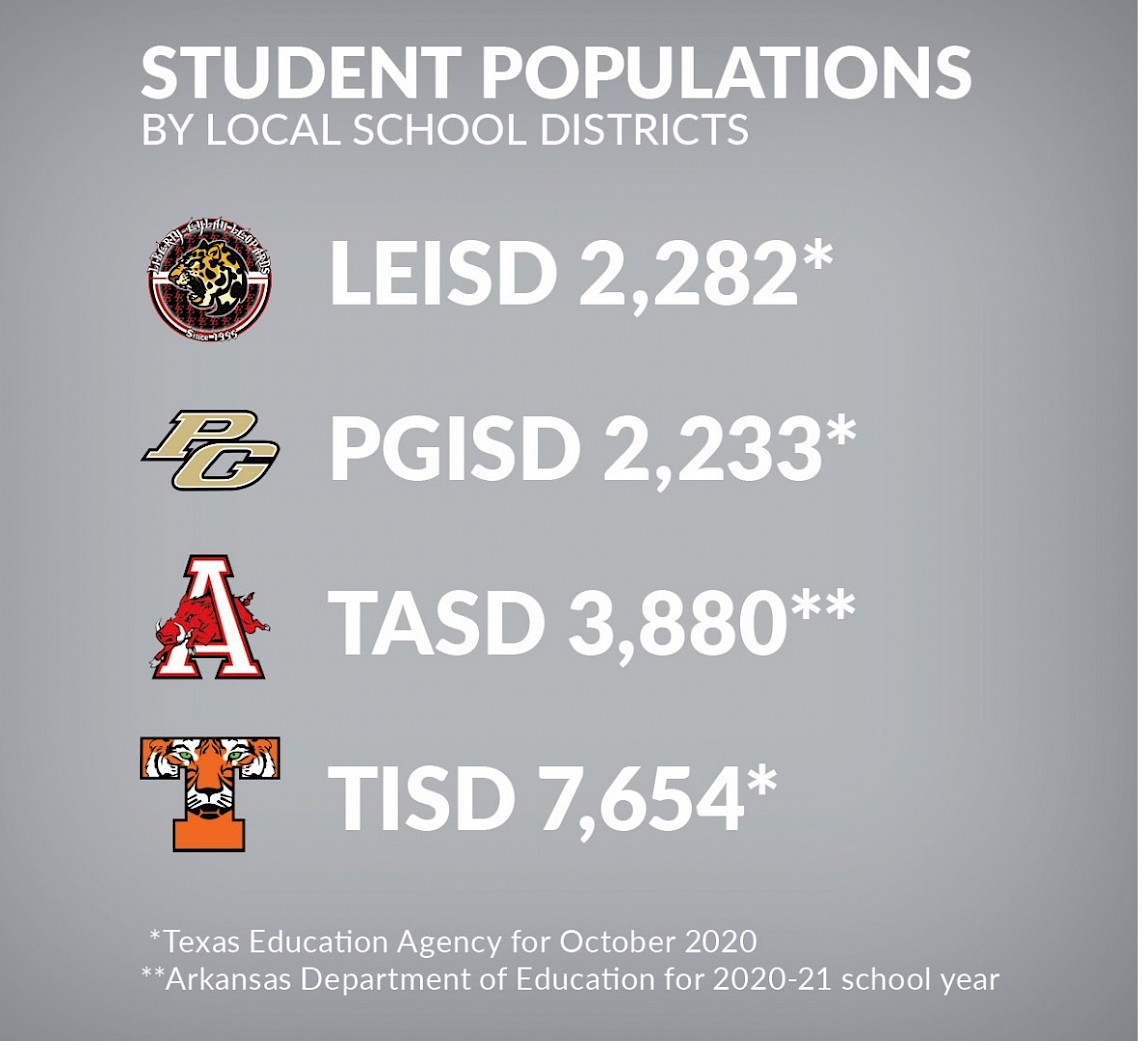The Team of Eight
“Who in their right mind would ever want to serve on a public school board?”
I was asked that question in 1997 when I first sought election to the Texarkana Independent School District Board of Trustees. Twenty-four years later, 14 of which I spent as a TISD Trustee (1997 to 2003 and 2013 to the present), I can happily report that I have never found a more rewarding experience.
School board members (or trustees) are elected by voters in the school districts they serve to make important decisions about their local schools. Trustees are not paid, so school boards bring together people who are passionate about quality education and willing to commit much of their time to this crucial public service. They provide local, citizen governance and oversight of education at a point close to the parent and child. Though ultimate responsibility for education rests with each state, both Arkansas and Texas have delegated much of that responsibility to the local school board. Within the framework of state and federal law and rules promulgated by state authorities (the Department of Education in Arkansas and the State Board of Education in Texas and their respective commissioners), individual school districts have significant latitude in shaping the educational programs of their schools.
It is the primary responsibility of each individual trustee to study issues facing the district, evaluate needs and resources, and, after due consideration, vote in the best interest of all students at a formal meeting of the board. This is neither an easy job nor an enviable task. Trustees regularly face hard choices, self-sacrifice and exposure to public criticism. However, it also brings a great deal of personal satisfaction in sharing with parents, staff, and students their academic successes. This crucial responsibility and the closeness of trustees to the voters arguably make the local school board the purest example of democracy our society presents.
With rare exceptions, most public school boards in Arkansas and Texas comprise seven elected trustees. Combined with the district superintendent, this “Team of Eight” collectively fulfills a number of responsibilities critical to the district’s success.
1. Articulate a mission. The school board sets the course for the district’s schools by adopting goals and priorities to keep the district moving in a positive direction and then monitors success. Each board has a mission statement to guide it when setting goals. Here are the mission statements adopted by our local public school boards…
LEISD—Liberty-Eylau Independent School District will provide an instructional environment where all students will develop essential academic, career, and social skills for a lifetime of learning. Our students will become responsible, contributing, and highly productive citizens in a diverse and changing world.
PGISD—The mission of the Pleasant Grove Independent School District is to ensure high levels of learning for all students.
TASD—The mission of the Texarkana Arkansas School District is to empower all students to realize their full potential.
TISD—The mission of Texarkana Independent School District, an innovative learning community strengthened by its diversity, is to provide a superior education in a caring environment that inspires, challenges and engages each student through a wide range of opportunities.
You will readily note that these mission statements are as unique as the school district trustees who authored them and the student bodies they address. This is a prime example of how elected trustees pursue their responsibilities, always mindful of the populations they serve. Using the district’s foundational mission statement, trustees establish a clear vision and high expectations for quality education that supports strong student outcomes and then reviews regular reports from the administration on district operations and progress toward goals.
2. Advance policy. A key responsibility of the board is to adopt local policies that guide how the district operates. These policies set practical guidelines for transforming the district’s mission into reality. Local school boards govern by adopting policies that must be consistent with and within the scope allowed by federal and state laws and regulations. Important decisions are made based on district policies, where trustees influence nearly every aspect of school operation. District policy also provides a record of the decisions the board has made.
3. Demonstrate accountability. School trustees share responsibility for the performance of the district’s schools and students. This requires maintaining high academic standards, transparency and accountability, and it is a responsibility shared with a number of parties: teachers, administrators, support staff and parents. That’s right—parents. More often these days than one might suspect, some parents expect their children’s education to depend solely on the actions of educators and activities which take place on school campuses. Successful students require more, and many school districts find they are required to expend a disproportionate number of resources on student populations where parents either refuse to accept accountability for their students’ performance or do not understand the necessity to do so.
4. Provide community leadership. Board members lead the community as advocates for public schools, serving as the link between the school system and the public. To build trust between the district and the community, trustees must listen to and hear their constituents and explain the district’s priorities established to meet the community’s needs and expectations. As public education advocates, they help build support and report district progress by communicating with the community, students, staff, parents and the media. Once the board makes a decision, its role is to engage its district’s patrons in ways that promote continued constructive discussions and generate positive community interest in its schools’ educational efforts.
5. Forge consensus. Public school trustees frequently confront issues that invite a diversity of strong opinions and passionate beliefs. Their goal should, however, remain ever consistent: to pursue consensus, to reconcile differences and to reach compromise—all in the service of their students.
6. Employ and evaluate the superintendent. One of the most crucial responsibilities of a school board is the selection of a superintendent. The superintendent, as chief executive officer of the district, implements policies set by the board and is the person held accountable for the smooth and successful operation of its schools. While the board’s focus is oversight of management, policymaking, planning and evaluation, the superintendent’s focus is on implementation and managing day-to-day operations. Through yearly written performance evaluations and ongoing discussions, the board assesses the superintendent’s progress toward district goals.
7. Adopt a budget and set a tax rate. Perhaps the least popular, yet most necessary, responsibility of the school board is to manage the district’s finances. The superintendent and staff formulate the school district budget and present it to the board for approval. If the board has revisions, the superintendent makes those changes. After conducting a public hearing to receive comments, the board adopts the budget and approves a tax rate to ensure the budget is adequately funded to attain those goals identified and prioritized by the trustees considering any input shared by their district constituents. Trustees must exercise good stewardship as they marshal district resources to achieve the highest outcomes at reasonable costs.
Now in my fifth three-year term as a TISD trustee, I consider myself a lucky guy to have been associated with like-minded and equally yoked friends to serve in this unique position of public trust. It is not now, nor has it ever been, a responsibility taken lightly, and candidly, it has not always been fun.
Serving as a public-school trustee carries a much greater burden than simply being a representative. It requires fortitude of mind and spirit and the prescient sense to lead transformational change in educational methodology and student performance achievement, anticipating today what our students will need tomorrow. That is a challenge which piques my interest, requires creative thinking and keeps me engaged.
As a product of TISD myself, and with three TISD-graduate sons who were well-prepared by their teachers to successfully navigate the rigors of higher education, I know first-hand the power of public education and the opportunities it affords the youth of our community who choose to avail themselves of all it offers. For me, there could be no better reason than that to serve on a public school board.



